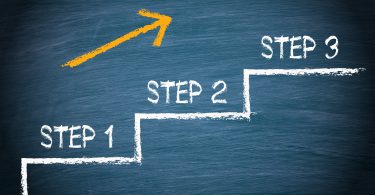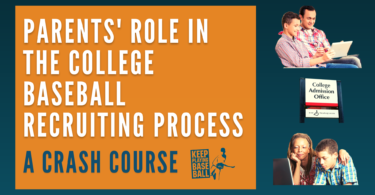As soon as a college coach lays eyes on you, before they’ve seen you perform any sport-specific activity, their evaluation process has already begun. Do you pass the eye test? Is your body language confident? Do you look like a ballplayer?
Your body language is a billboard for college coaches. Does your billboard tell them to recruit you, or steer clear?
While they care about your frame, size, maturity, and other characteristics you can’t necessarily control, college coaches also evaluate your body language and the way you carry yourself. Not only are these things you control, you can practice and improve them as well.
A few years ago, I sat in the stands and watched University of Alabama Birmingham’s baseball team practice. Still in the period of fall where practice hours are limited, UAB had 5 hitting groups come through for about 20 minutes each. A pretty normal D1 set up, except for the fact that they weren’t getting their hacks in!
Instead, hitters spent their time practicing walking up to the plate, taking signs, and working on pre-pitch breathing, routine, and box presence. This should help to give a sense of just how important body language and presence are in baseball. The exercise rightly emphasized the importance of process and routine, but it also highlighted the significance of body language and presence, a topic we discuss in this recent Think the Game article. In the same way that these hitters wanted to command the batter’s box, you want to be able to command the attention of recruiters with positive body language.
Whether walking from the parking lot to the dugout, during practice, in a game, or on a campus visit, body language is hugely important! Body language is your non-verbal way of communicating, and includes everything from facial expressions and posture, to how much space you are taking up with your stance or the intent behind even the most subtle movements. You can bet that coaches and recruiters are looking closely at your body language and using it to make quick assessments and judgments about who you are as a person and player. This may not be fair, but knowing this gives you a chance to use it to your advantage.
Body language is something that you need to be aware of and luckily it’s something that you can practice and work to improve! While confidence makes it easier to have positive body language, it’s not a pre-requisite. You may have heard the phrase, “Fake it until you make it.” Science experiments looking into the validity of this mantra have shown that doing this in fact works! Practicing good body language can help change your mindset and confidence in a positive way. Social psychologist Amy Cuddy discusses the importance of positive body language to an individual’s success in her famous TED talk (watched over 63 million times and worth the 20 minutes it takes to watch). Here is how she originally* explained the way it works:
We already know that your body language “governs the way other people think and feel about us.” This is why having positive body language is so important to making a good impression with college coaches. But Cuddy also explains that body language can also ‘govern how we think and feel about ourselves.’ This is the ‘fake it until you make it’ theory coming to life.
In other words, “the connection between the mind and the body works both ways.” By acting with powerful and positive body language on purpose, you elevate your testosterone levels (the hormones associated with powerful performance and dominance) and lower your cortisol levels (the hormones associated with stress and failure). This hormonal change plays a significant role in helping to view and think about yourself in a more positive and hopeful way. Cuddy suggests that these positive hormonal changes can take place with as little as two minutes of practicing positive body language. In other words, if you practice positive body language or what Cuddy refers to as a ‘power pose’ for two minutes before a meeting or competitive event, you will be well on your way to improving your performance.
With college coaches evaluating your body language, taking Cuddy’s advice and implementing some of the positive mannerisms below will not only improve your reputation as a recruit, it just may make you a better player. Now that you know what to do, combine daily body language practice with a growth mindset and watch your reputation, confidence, and ability take off!
Practice these examples of positive body language to improve your presence:
- Chest Up/Standing Tall
- Head Up
- Arms Up
- Taking Up Space/Spreading Out
- Standing Close to Teammates
- Lots of Contact/High 5’s/Fist Bumps with Teammates
- Strutting or Walking with Confidence
- Eye Contact
- Applauding or Encouraging Others
- Strong Hand Shake
- Sitting Up Straight
- Paying Attention
- Smiling
- Nodding in Agreement
- Keeping Hands Out of Pockets
- Relaxed Posture
Avoid these examples of negative or weak body language:
- Shoulders Rolled Forward
- Slouching
- Head Down or Hanging
- Fists Clenched
- Looking Deflated
- Touching Your Face
- Hands Covering Face/Fingers or Palms to Forehead
- Looking Away
- Acting Fidgety
- Crossing Arms or Legs
- Hiding Your Hands/Hands in Pockets
- Looking at Your Watch
- Making Yourself Smaller in Appearance
- Frowning
*Cuddy’s original study has been replicated many times over and as scientific methods and capabilities have improved, the results of the original study have been debated. Cuddy provides updates on the findings and what has changed since her study in this interview with Ted Talks.







